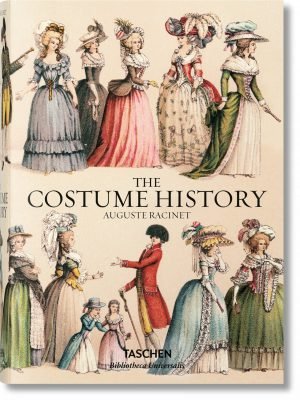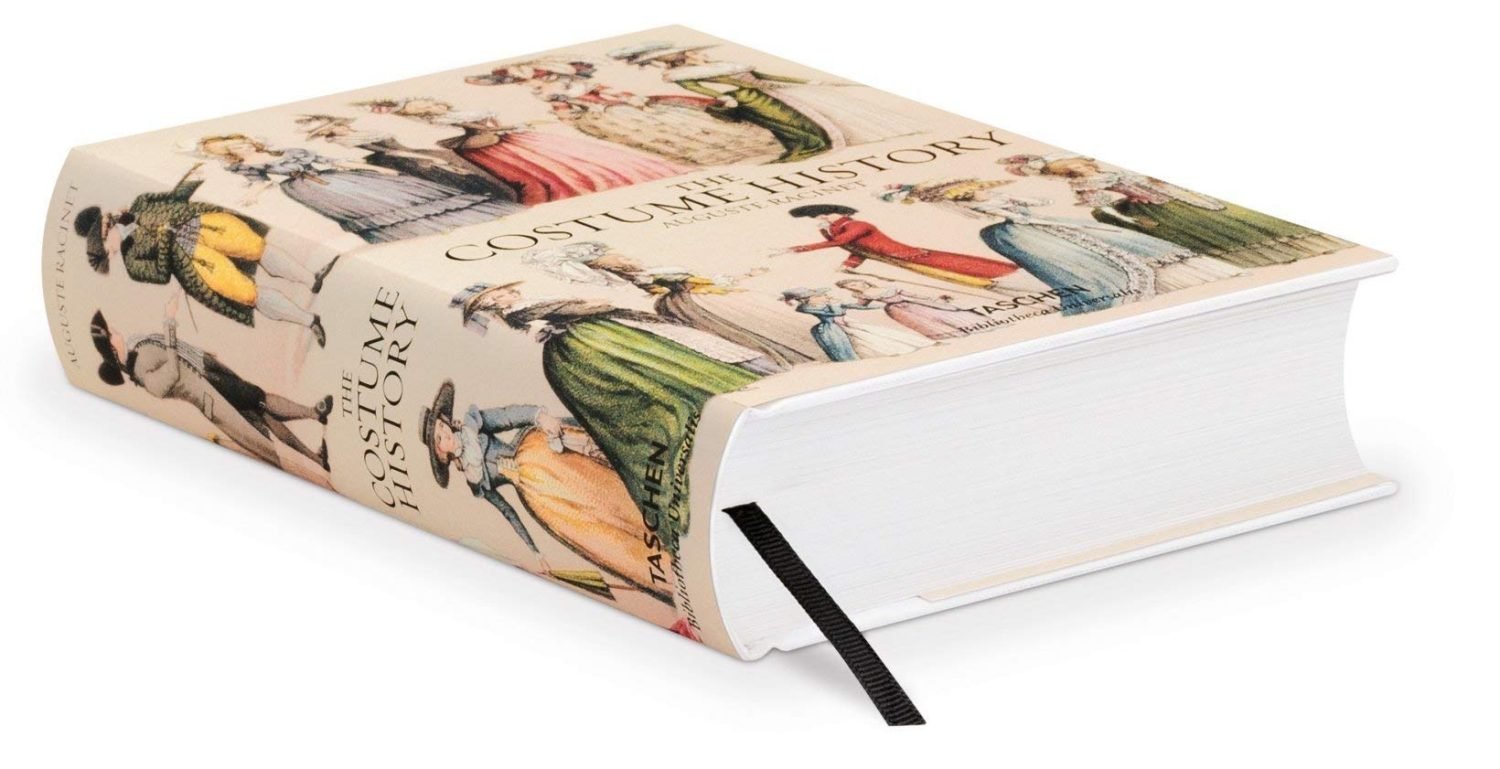
ITALY XVI. CENTURY. COSTUMES FROM THE END OF THE CENTURY. TRANSPORTATION.
No. 1. Two Venetian gondolas. The cabin of this vehicle is covered by barrel tires, like the carriages of the Middle Ages. A thick fabric was pulled over the tires, which completely hid the passengers, but could also be folded back to give a free view. Usually, the gondola was five feet wide and twenty-five feet long. On festive days, precious fabrics were chosen to decorate the cabin and the honorary seat. The Nobilis had gondoliers in their service. But only the doge was allowed to wear the livery of his master.
No. 2, resident of Turin. It was customary for the woman to get on the horse behind the man. She held on to either the saddle or the man’s shoulder without using a stirrup or footplate. The ladies of better rank were masked when riding, as was the young woman in our picture, who tied a veil-like piece of cloth, with holes cut out for the eyes, in front of her face.
No. 3. Doctor from Padua. His clothes are hidden under the wide coat. One sees only the stocking of black cloth or silk and the shoe of black cloth or velvet. The cap folded at the bottom, also of black cloth or velvet, was worn by doctors and jurists throughout Lombardy. The rider wears spurs with large wheels.
No 4. Mules with baskets which served as sedan chairs for the transport of persons. A servant led the animals on a leash. The palanquin was long enough for the animals to be in a semi-recumbent position. This kind of transport was especially common in Tuscany.
No. 5. Roman penitent. Even in the 19th century, spiritual orders still existed in Italy, whose members were obliged to scourge themselves in secret or publicly. The scourge consisted of nine or ten ropes, to the ends of which lead balls with iron tips were attached. To allow the points to penetrate the flesh, the robe had an opening on the back.
No. 6. Noble Roman lady. She wears the folded fan, which around this time began to replace the feather and flag fan. This latter, probably of Saracen origin, was particularly common in Venice. The fan folded in the Chinese manner was worn in Rome, Ferrara, Turin and Naples. It was hung on the belt with a golden chain.
No. 7. Venetian courtesan. The two illustrations representing the same person are taken from the collection of Pietro Bertelli quoted below. They are two sheets of paper placed one on top of the other, the upper one of which is attached to a hinge and can be opened to reveal the undergarments. The royal copperplate engraving cabinet in Berlin owns several of these representations of Venetian courtesans, consisting of three leaves, executed in meticulous painting.
It was around this time that the taste for majestic grandeur arose. Various methods were used to achieve this. The bust was lengthened and high stilt shoes of wood covered with leather were attached under the shoes. These stilt shoes eventually assumed such dimensions that the ladies could only move with difficulty and needed two servants to support them and save them from falling. The Museo Correr in Venice has examples of such stilt shoes.
Finally the hair was made as high as possible, as you can see in our example, in the shape of two rising horns. To bring the waist into harmony with the dress, which had become longer through the use of stilt shoes, the same was lengthened and, as with the men, stuffed in the manner of the “goose belly” and provided with a lace.
In the general type, the costume of courtesans did not differ from that of women of the nobility. We find in the collection of Vecellio’s noble Venetian women, whose costume is the same as ours. We find the same fan-shaped collar held by brass wires, the shoulder frill, the horn-like hairstyle, the low neckline and the handkerchief with small pieces of lead sewn into the corners to create a beautiful drape. Incidentally, it seems to be clear from the paintings in the Berlin Kupferstich-Kabinet (Berlin copperplate engraving cabinet) that even then the custom of wearing shirts was not yet common.
The courtesans played an outstanding role in Venice. With the seclusion of the Venetian woman required by custom, the courtesans formed the centre of social life. The courtesans were often attended by the envoys of foreign powers, who negotiated the most important matters there. However, in order to limit the excessive luxury of the courtesans, and in particular to make certain distinctions between their costume and that of decent women, they were forbidden to wear pearls. “Vecellio says you could tell their rank as soon as they bare their necks, even though they wore round objects resembling pearls. On Venetian courtesans, see Les femmes blondes selon les peintres de l’école de Venise par deux Venitiens. Paris, 1865.
Our illustration no. 7 shows that the Venetian courtesans wore men’s trousers under their clothes. The reason for this peculiar custom is perhaps that the wearers, since the skirts were not as tightly fitted at the bottom as they used to be, wanted to protect themselves from colds by wearing trousers. It is likely, however, that in the house they took off their uncomfortable, sluggish outer dress and moved around in male costume. The stockings and the trousers were not of the same colour, the stockings were usually white, the leg dresses coloured. It seems that the calves were also helped by padding.
It is believed that the custom of wearing trousers under the skirts was introduced by Catherine de’ Medici (1519-1589). She introduced a different way of riding for the ladies, which is still used today. Whereas ladies used to sit sideways on the saddle and support their feet on a hanging board, Catherine had her right leg placed on the arch of the saddle, on which a kind of fork was later attached. This new way of riding probably also resulted in the inclusion of the trousers in the female costume. For there are examples which show that even decent ladies wore leg dresses up to the knees.
(The figures are borrowed from the engravings in the collection of Pietro Bertelli, which was published in Padua in 1589 and 1591 in two volumes).
Source: History of the costume in chronological development by Auguste Racinet. Edited by Adolf Rosenberg. Berlin 1888.








